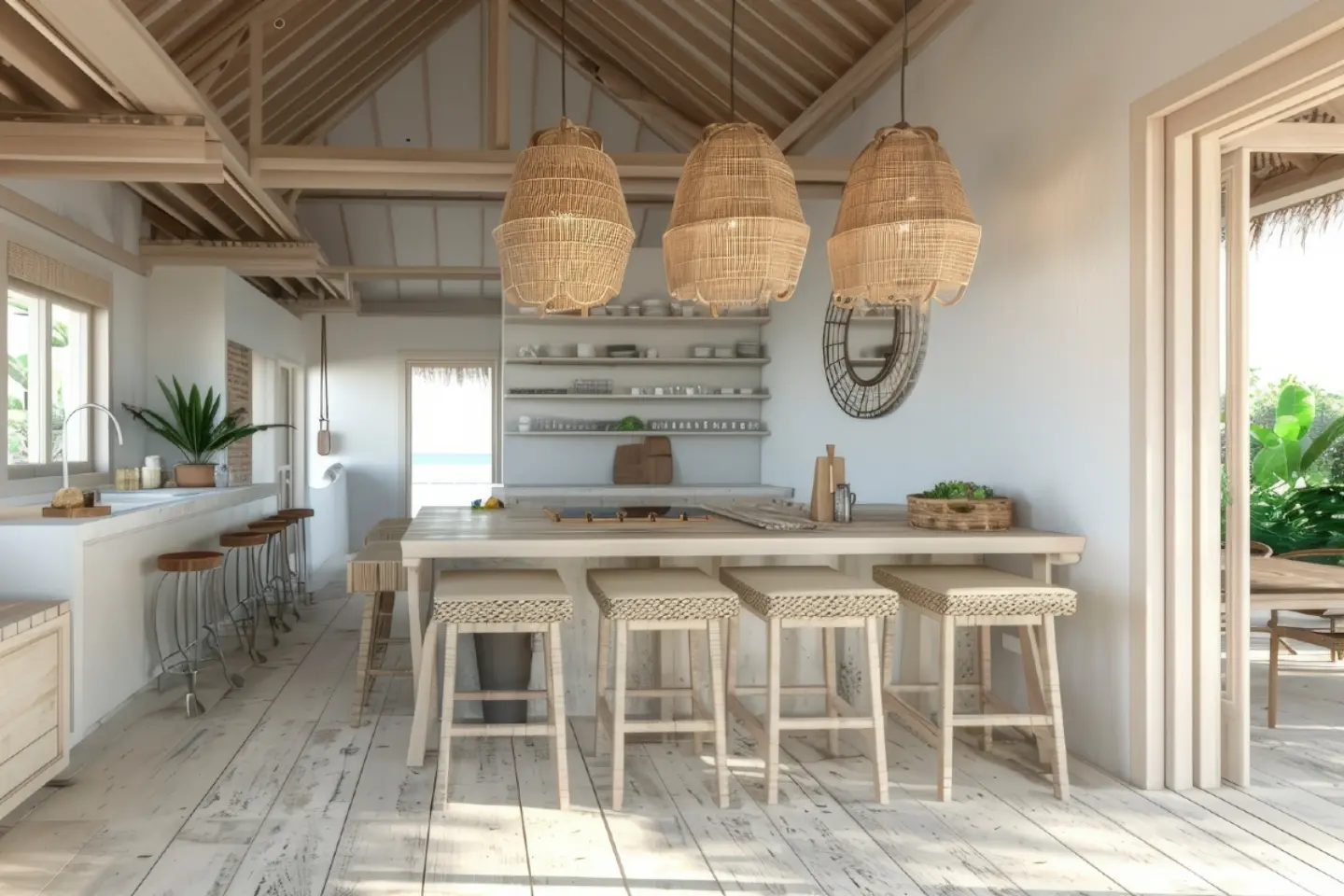Creating a living space that feels vibrant, airy, and comfortable throughout the changing seasons can be a challenge. It's an intricate balance of design, function, and the sometimes unpredictable British weather. However, with expert guidance and a few clever tricks up your sleeve, you can transform your home into a year-round sanctuary.

Let's start with the use of light, which is fundamental in making a house feel both bright and cool. Maximising natural light can radically alter the ambiance of a room. Consider where the light enters your home and the times of day rooms are used most. Reflective surfaces can bounce light around a room, so incorporating mirrors or high-gloss furniture can increase the sense of space and brightness.
In terms of colour, opt for light hues on walls and floors to create a sense of openness. Soft tones like pastels, neutrals, and whites reflect more light and have a cooling effect on the space. If you're concerned about plain walls looking too sterile, you can add texture with wall hangings, wood grains, or patterned tiles, which bring character while maintaining a fresh and airy feel.
Window treatments significantly contribute to the control of light and temperature. During the warmer months, lightweight, sheer curtains allow for a gentle diffusion of light while blocking out the harsh glare of the midday sun. Conversely, in winter, heavier drapes can be used to insulate against the cold and retain warmth within rooms. Additionally, installing blinds gives you the flexibility to adjust lighting and privacy as required.
Ventilation is another important aspect of keeping a home cool. Well-placed windows, vents, and skylights can encourage cross-ventilation, naturally reducing the need for artificial cooling. This is not only good for your electric bill but also better for the environment.
Enhancing your home with indoor plants can also invigorate your living space. They're not just pleasing to the eye; plants can improve air quality, and some species are known to have cooling effects on their surroundings by releasing moisture into the air through a process called transpiration.
When it comes to lighting fixtures, LED lights emit far less heat than traditional incandescent bulbs and are more energy-efficient, which can help keep the home cooler. During the day, strategic task lighting can be used instead of illuminating an entire room, again saving energy and reducing heat.
During the colder months, you'll want to keep your home snug and warm. Insulation is key here; ensure your house is well-insulated, including walls, floors, and particularly the loft space. Good insulation keeps heat from escaping, meaning your house stays warmer without having to continually crank up the heating.
Adding layers to your interior can also contribute to warmth. Thick rugs, throws, and heavy curtains can make a space feel warmer and provide the added benefit of personalising your decor. In terms of furniture, pieces with more weight and substance, such as upholstered sofas and wooden tables, can anchor a room and make it feel cosier.
Flooring also plays a vital role in the thermal comfort of your home. Wooden or laminate floors are easier to keep cool in summer and can be warmed up in winter with rugs. Underfloor heating is an increasingly popular option, distributing heat evenly and being particularly welcoming to cold feet on winter mornings.
Smart home technology can further contribute to maintaining a perfect balance in your home environment. Thermostats that learn your routine, motion-sensor lights that reduce wasted electricity, and smart blinds that react to weather conditions are all examples of how tech can enhance the livability of your home.
Lastly, don't underestimate the power of scent. During summer, fresh, floral, or citrus scents can enhance the feeling of coolness and brightness. In winter, warmer, spicier scents like cinnamon, vanilla, or wood can increase the sense of warmth within your home.
In transforming your house, be it a chic flat in the city or a rustic cottage in the countryside, it's all about understanding how light, texture, scent, and technology can play their part in creating an environment that feels just right, no matter the season. With these expert tips, your home will not only serve as a personal retreat but will also impress guests with its adaptable elegance and comfort, year-round.
